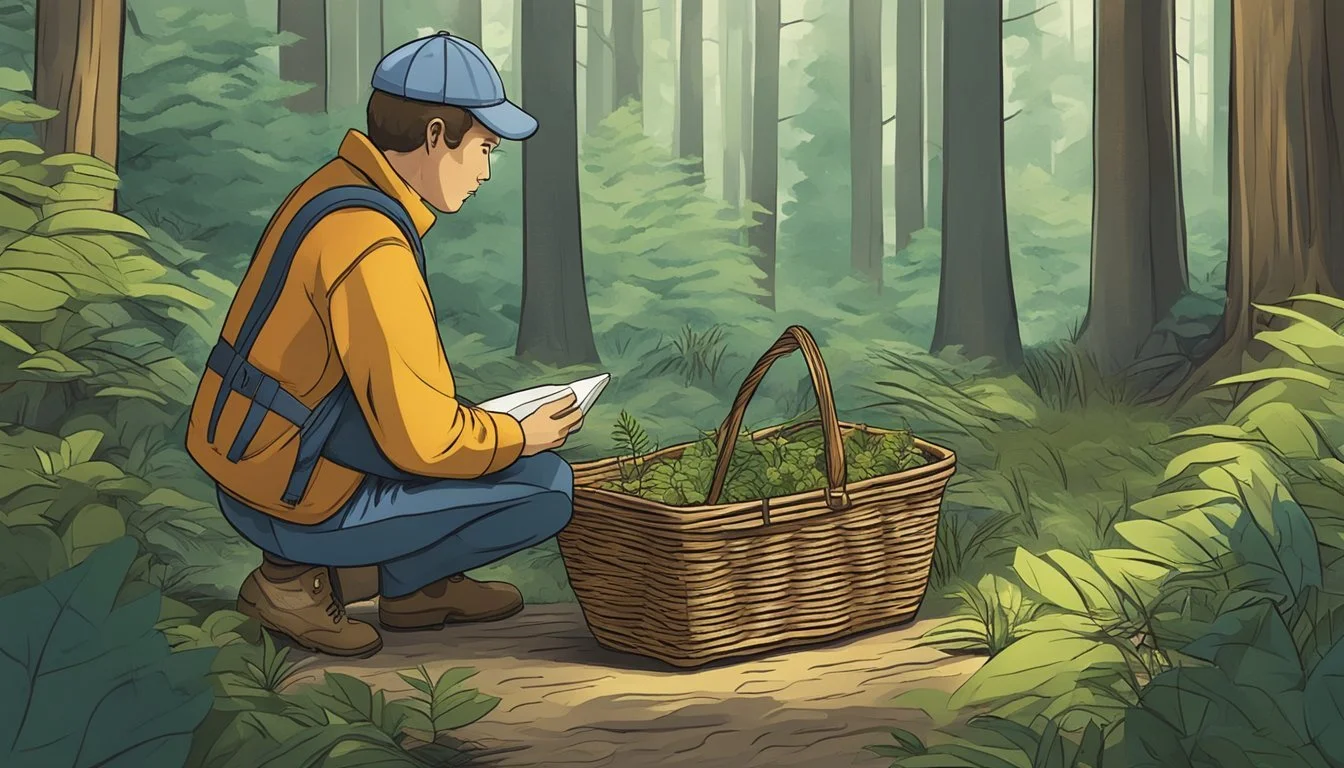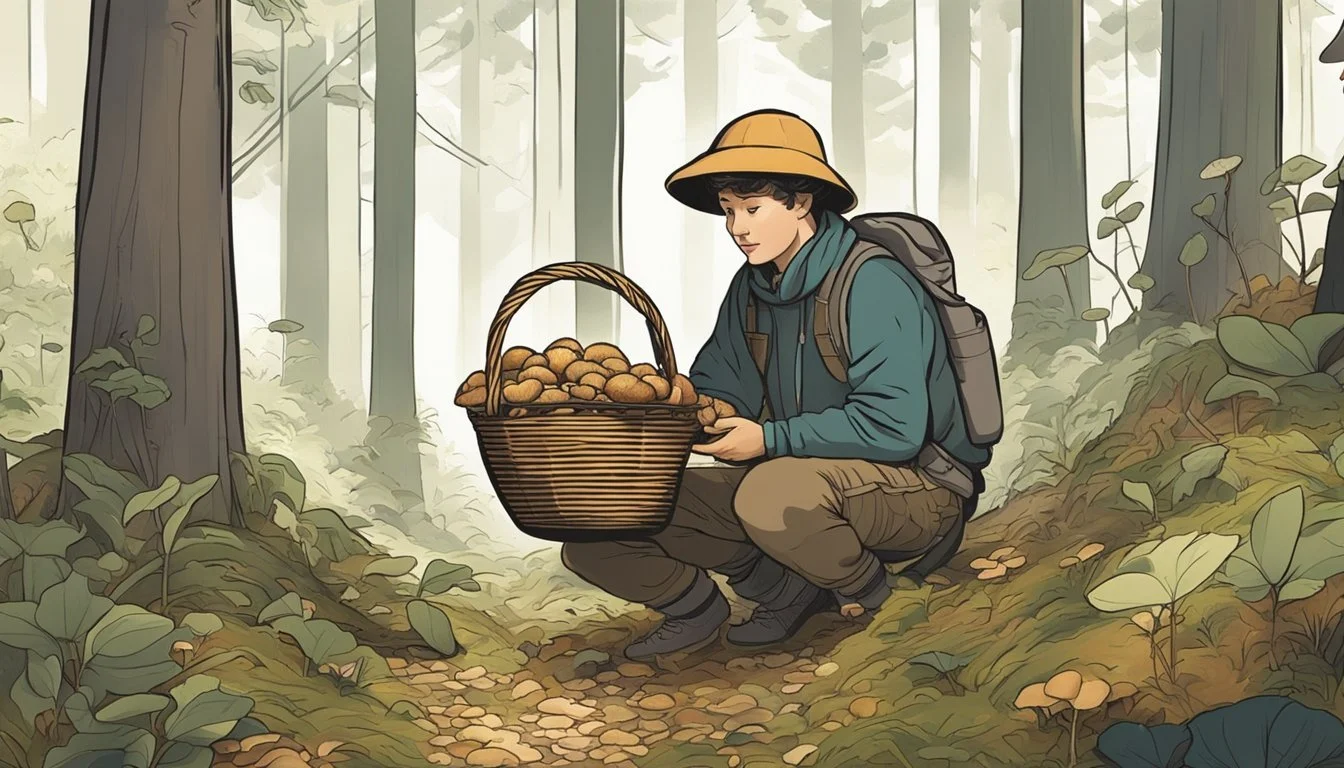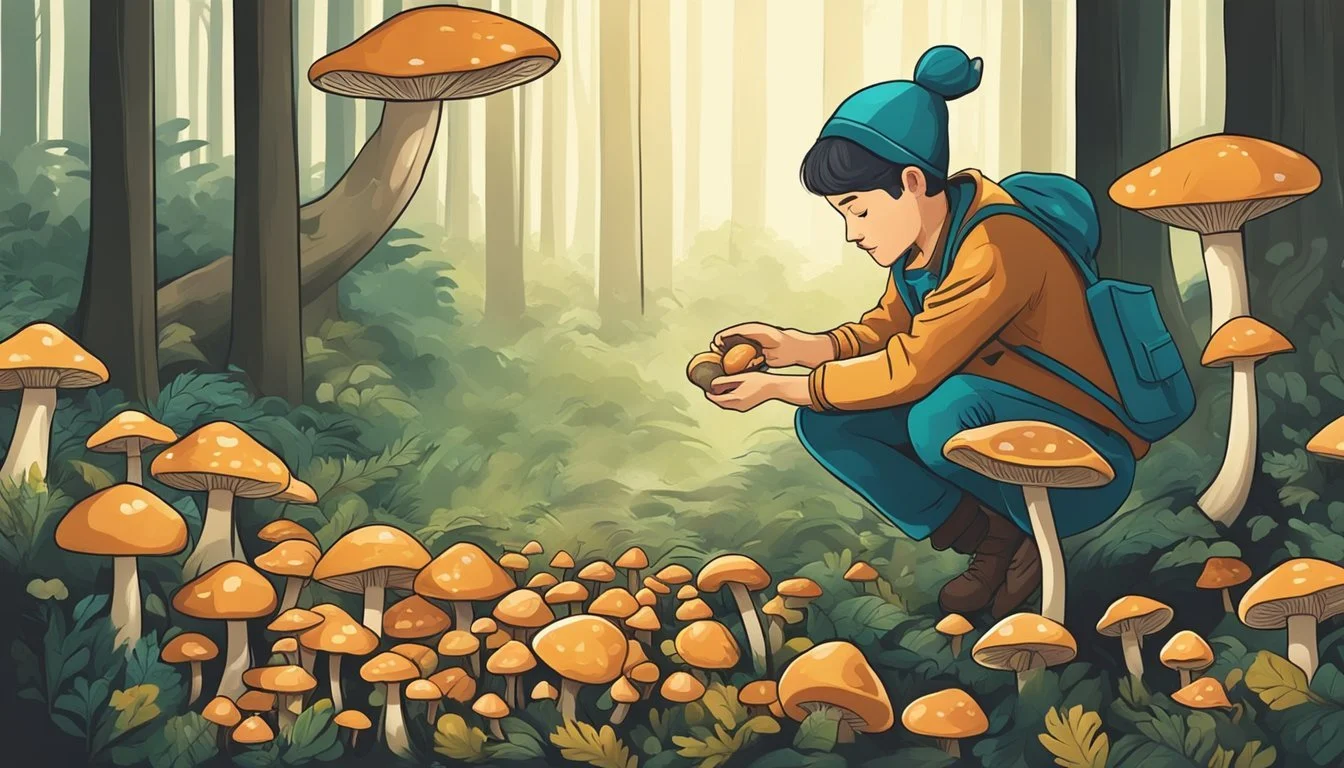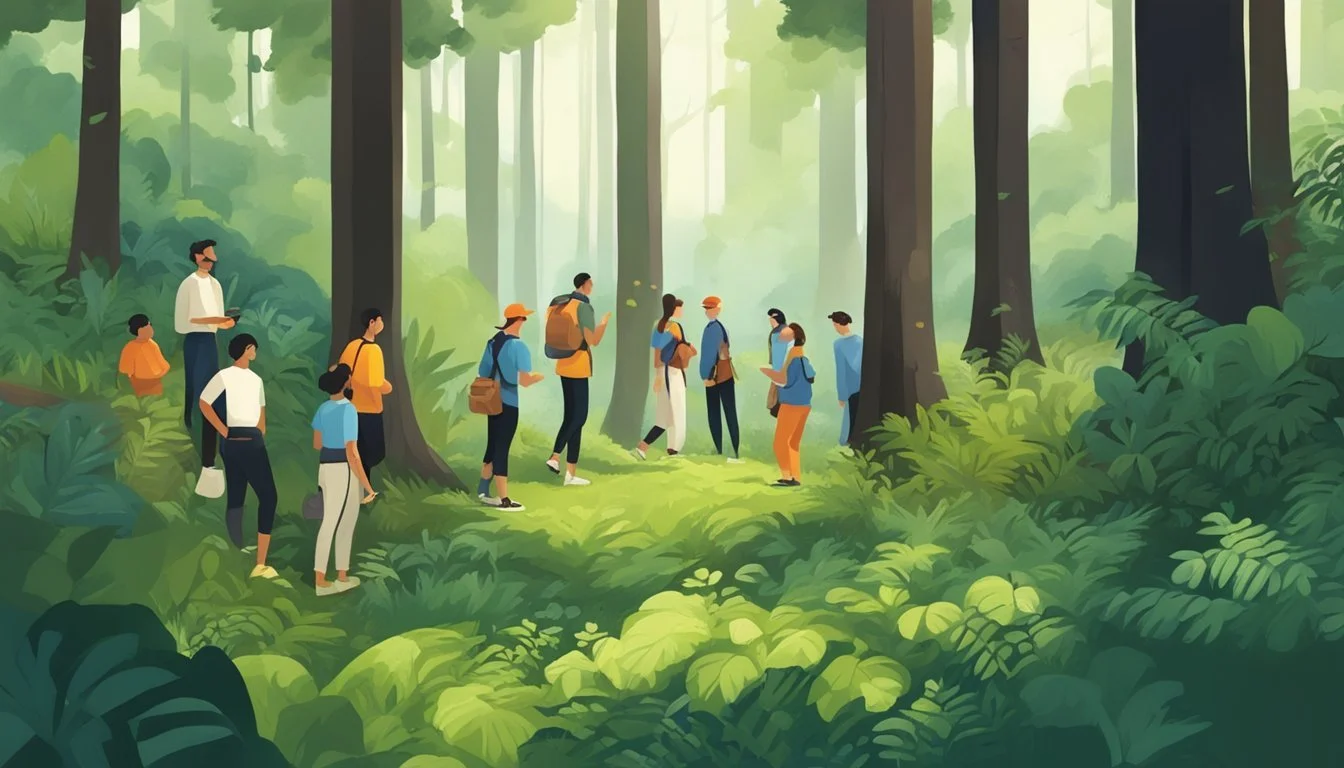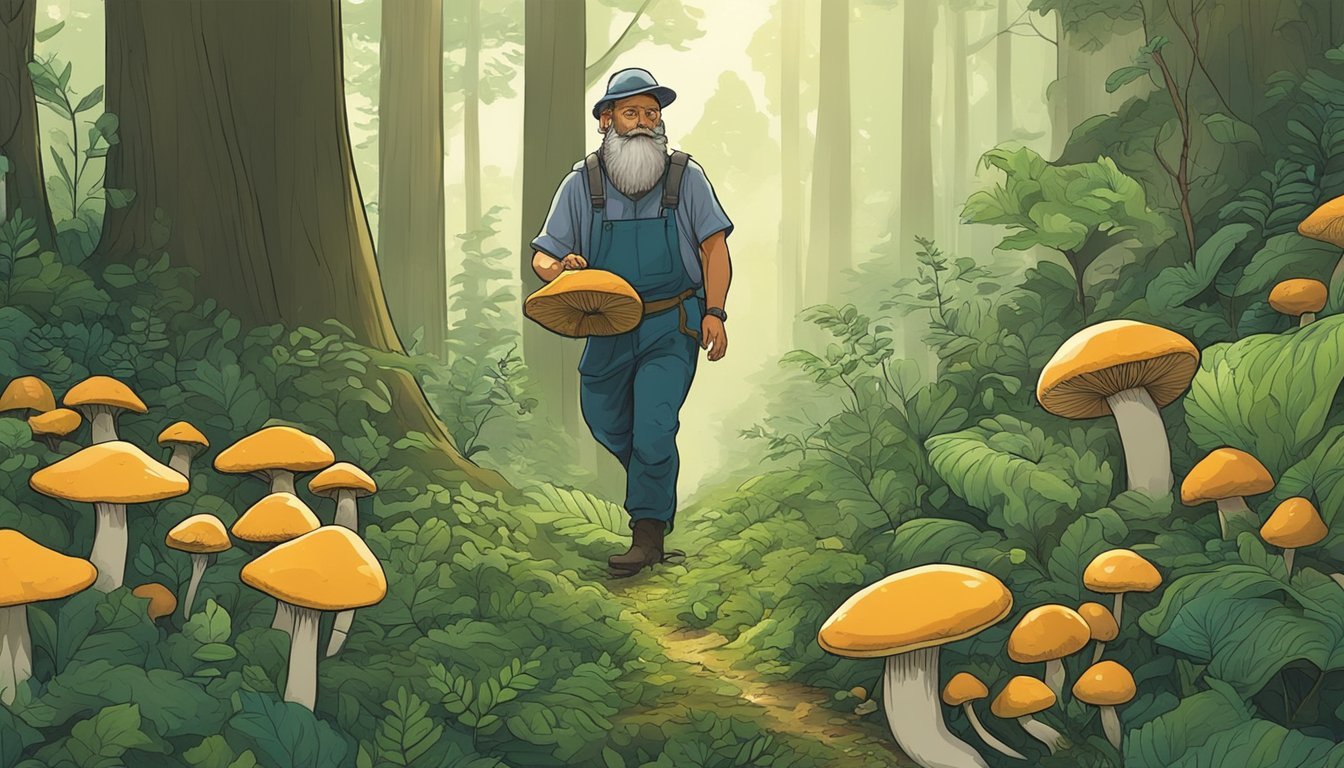Black Belt Mushroom Hunting
Mastering the Art of Foraging
Black Belt Mushroom Hunting is an art that combines skill, knowledge, and patience. When it comes to foraging mushrooms, especially black morels, knowing where and when to look is essential. Black morels often thrive in areas with ground temperatures of at least 45 degrees, sustained for around a week. This makes early spring, particularly after a good rain, the best time to head to the woods.
Experienced foragers know that black morels tend to appear in specific environments. South-facing slopes, lightly disturbed grounds, and areas near dead elm trees are prime locations. These mushrooms favor spots where the habitat is just right, leveraging the natural conditions to their fullest potential. Using tools like mapping apps can also significantly improve the efficiency of finding these rare fungi.
For a successful hunt, proper preparation is key. Sturdy walking shoes, breathable bags for collecting, and sharp knives for cutting morels at the base of their stems can make the experience more productive and enjoyable. Whether you are a seasoned forager or new to mushroom hunting, learning these essentials can elevate your skills to a Black Belt level in mushroom hunting.
Basics of Mycology
Mycology is the study of fungi, encompassing their genetic properties, biochemical processes, and taxonomy. It is especially relevant for understanding the responsible and sustainable practice of mushroom hunting.
Mushroom Life Cycle
The life cycle of mushrooms begins with spores, which are microscopic and can be found in vast quantities released from the mature fruiting bodies of fungi. These spores germinate in the right conditions to form mycelium, a network of thread-like structures also known as hyphae.
Mycelium forms the basis of fungal growth, absorbing nutrients from the environment. When conditions are favorable, the mycelium will produce a fruiting body, commonly recognized as a mushroom, which in turn releases more spores. This cycle ensures the proliferative success of fungi in various ecosystems.
Different Types of Fungi
Fungi come in various forms, with mushrooms being one of the most recognizable types. Other categories include molds and yeasts, all part of the large kingdom of fungi.
Edible mushrooms like Morchella (morels) and Agaricus (common button mushrooms) are popular among foragers. There are also medicinal fungi, such as Ganoderma (reishi). It's essential to distinguish between these and toxic species, using reliable sources and expert advice to avoid mistakes.
Different types of fungi can have roles ranging from decomposers breaking down organic material to symbionts forming beneficial relationships with other plants, showcasing their ecological importance.
Black Morel Identification
Black Morels, scientifically known as Morchella angusticeps, exhibit distinct visual characteristics and environmental preferences that make them identifiable. Recognizing these mushrooms involves understanding their unique appearance, differentiating them from false morels, and knowing their typical habitats and growth conditions.
Visual Characteristics
Black Morels feature darker, conical caps with deeply ridged surfaces. These caps possess a honeycomb-like pattern, which is a hallmark of true morels.
They generally have a black to dark brown color and measure 2 to 4 inches in height. The stem is usually lighter in color, often white to pale cream, and has a hollow interior. The combination of their cap's texture and coloration helps distinguish them from other types.
False Morels vs True Morels
Identifying true Black Morels from false morels is crucial due to potential toxicity. False morels common look-alikes include Gyromitra and Verpa species, which can contain harmful compounds.
True morels have a completely hollow interior when sliced vertically. False morels may appear wrinkled and are typically not hollow inside. Another key feature is the attachment of the cap to the stem; in true morels, the cap is directly attached to the stem, whereas in false morels, it hangs loosely.
Habitats and Growing Conditions
Black Morels thrive in specific environments, often appearing in hardwood forests. They favor the roots of elm, ash, poplar, and oak trees.
Typically, they emerge in early spring when soil temperatures reach about 45 degrees Fahrenheit. They benefit from moisture, often flourishing after rainfall. Black Morels can also be found in recently burned areas, where fire has cleared the ground, providing ideal growth conditions.
Recognizing these habitats and conditions can significantly increase the chances of locating these prized mushrooms.
Preparation for Mushroom Hunting
When preparing for mushroom hunting, it's crucial to gather essential gear, ensure safety, and be aware of legal requirements to make the experience enjoyable and productive. Proper preparation enhances the ability to find and harvest mushrooms effectively and responsibly.
Essential Gear
A well-prepared mushroom hunter carries specific equipment to ensure a successful outing. A basket or mesh bag is ideal for collecting mushrooms since it allows air circulation, preventing spoilage. A sharp knife or scissors is necessary for cleanly harvesting mushrooms at the base, maintaining the integrity of the mycelium.
Hunters should wear long pants and a long-sleeved shirt to protect against scratches and insects. Bug spray is also recommended to ward off ticks. Depending on the terrain and weather, wearing waterproof boots and carrying a mapping tool or GPS can provide additional support and safety during the hunting trip.
Safety Measures
Safety is paramount in mushroom hunting. Protective clothing, such as long pants and long-sleeved shirts, shields hunters from ticks and other insects. Tick repellents should be applied to skin and clothing. It's essential to stay hydrated by carrying enough water and to bring a first aid kit for emergencies.
Hunters should inform someone of their whereabouts and expected return time, especially when exploring remote areas. Familiarizing oneself with the local wildlife and weather conditions helps avoid unexpected dangers. Lastly, carrying a charged phone or communication device ensures you can call for help if needed.
Legal Considerations
Before heading out, hunters must be familiar with local regulations. Many areas require a permit for mushroom hunting, ensuring that it is done sustainably and legally. It is also important to respect property boundaries to avoid trespassing; checking land ownership or public access rules can prevent legal issues.
Some regions have specific seasons and limits on harvesting to protect mushroom populations. Hunters should be aware of these and comply with them to ensure future growth and availability. Ignorance of the rules can lead to fines or legal trouble, making it crucial to research and adhere to local guidelines fully.
Optimal Foraging Times and Climate
Finding black morel mushrooms requires precise timing and favorable climatic conditions. Both specific seasonal cues and fine details of weather can significantly influence success.
Seasonal Changes
Black morels typically emerge in early spring, with appearances often beginning around mid-May and extending into early June. The mushrooms favor soil temperatures ranging from 45-55°F. They prefer conditions where daytime temperatures are above 40°F and nighttime temperatures stay above freezing, ensuring a steady rise in soil warmth.
Spring rains play a critical role in the development of morels. These rains, followed by warm days, create the moist soil environment conducive to morel growth. Snowmelt also contributes to soil moisture, which can be especially beneficial in mountainous or northern regions.
Weather Factors
The timing and pattern of rainfall greatly influence black morel proliferation. Morels thrive in areas experiencing consistent spring rains, which help maintain the necessary ground moisture. Sporadic rainfall or prolonged dry periods can hinder their growth.
Temperature consistency is equally crucial. Sudden drops in temperature, especially late spring frosts, can negatively impact morel emergence. Ideal conditions feature steadily warming temperatures with moderate humidity levels.
Southward and westward facing slopes often warm faster due to their exposure to more sunlight. These locations are prime for early-season hunting, as they create optimal microclimates. Similarly, areas with downed trees and light human disturbance offer favorable habitats for morels to thrive.
Locating Morel Mushroom Hotspots
When hunting for morel mushrooms, focusing on specific types of trees, terrain, recent wildfire areas, and particular soil and water conditions can significantly increase success.
Types of Trees and Terrain
Morel mushrooms are closely associated with certain tree species. Particularly, look for ash trees, elms, and cottonwoods. These trees often create an environment conducive to morel growth.
In addition, south-facing slopes are prime locations because they warm up sooner in the spring, providing an ideal growth environment. Former stream beds and ground that has been lightly disturbed by human activity also make excellent hunting grounds. Areas with downed trees can be promising, as morels often grow near the trunks and root systems.
Effects of Wildfires
Wildfires play a critical role in creating fertile grounds for morel mushrooms. Burn sites, particularly those affected by forest fires in the previous year, are hotspots for morel growth. After a wildfire, the soil is nutrient-rich and warmed, providing an optimal environment for morels.
Areas west of the Missouri River, where wildfires are more frequent, are known for their abundant morel populations. Even though the South experiences fewer wildfires, exploring recent burn sites can still yield a good harvest. Wildfire maps can prove useful in identifying these promising areas.
Water Sources and Soil Conditions
Morels generally thrive in moist environments, so proximity to water sources such as rivers and streams is beneficial. River bottoms and areas with high moisture levels are particularly productive. Loamy soil, which retains moisture while providing good drainage, offers an ideal growing medium for morels.
Monitoring the weather can also give hints about where morels might be emerging. Typically, morels begin to appear when daytime temperatures reach above 40°F, and nighttime temps remain in the 40s. The key is maintaining soil moisture while avoiding waterlogged conditions, allowing the delicate morel fungi to flourish.
Harvesting Techniques
When hunting for mushrooms, the methods used in harvesting can greatly affect both the quality of the mushrooms and the sustainability of the ecosystem. The primary techniques involve the choice between cutting and pulling mushrooms, as well as ensuring proper transport and storage.
Cutting vs Pulling
One of the key decisions when harvesting mushrooms is whether to cut them at the base or to pull them out from the ground.
Using a sharp knife to cut mushrooms at the base often results in minimal disruption to the surrounding mycelium, which is crucial for the sustainability of future growth. Others may prefer pulling, but this can disturb the mycelium more, potentially affecting the future growth of the mushroom colony.
Both methods have their proponents, but experienced harvesters generally recommend cutting to ensure a cleaner and more sustainable harvest.
Transport and Storage
Effective transport and storage of mushrooms are essential to maintain their quality from the field to the kitchen.
For transport, mesh bags or baskets are ideal as they allow for air circulation, preventing the mushrooms from becoming slimy and molding. Plastic bags should be avoided because they can trap moisture, leading to rapid deterioration of the mushrooms.
Once harvested, mushrooms should be kept cool and dry. If planning to store them for longer periods, drying techniques like using a dehydrator can preserve both their flavor and nutritional value. Properly dried mushrooms can be stored in airtight containers for extended periods, providing a stable and long-lasting ingredient.
By following these methods, mushroom hunters can ensure that their harvest remains fresh and retains the highest quality possible.
Cooking and Preservation
Morel mushrooms are a prized ingredient for food enthusiasts and chefs alike. Proper cleaning, preparation, and preservation methods ensure the mushrooms retain their distinct flavor and texture.
Cleaning and Preparing Morels
Cleaning morel mushrooms is crucial as they can harbor dirt and insects in their crevices. Start by soaking the morels in cool salted water for a few minutes to dislodge any debris. Rinse them gently under running water, then pat dry with a clean towel.
Tip: Avoid soaking for too long to prevent waterlogged mushrooms.
For uniform cooking, slice the morels in half or quarters, ensuring evenly sized pieces. A sharp knife works best for this task.
Culinary Uses
Morel mushrooms, with their rich, earthy flavor, elevate many dishes. Sauté in butter with a pinch of salt for a simple, delicious side dish. They pair exceptionally well with cream-based sauces and wines, making them a favorite in high-end restaurants.
Incorporate morels into risottos, pastas, or even scrambled eggs for an enhanced dining experience. Their unique texture and taste also complement meats such as steak or lamb.
Drying and Storing
Drying morels extends their shelf life significantly. Use a dehydrator set at 110°F for 8-10 hours, or place them in an oven at the lowest temperature with the door slightly open. Once thoroughly dried, store them in airtight jars, away from light and moisture.
To rehydrate, soak dried morels in warm water for 15-20 minutes before use. The soaking liquid, packed with mushroom flavor, can be used to enhance sauces and broths. Proper storage ensures they maintain their flavor for up to a year.
Community and Resources
Mushroom hunting communities and resources are essential for both novice and experienced foragers. Strong networks, both local and online, provide vital information, support, and guidance.
Local Foraging Groups
Local foraging groups play a significant role in cultivating a community-centric approach to mushroom hunting. They organize forays, workshops, and educational events. For instance, the Black Hills Mushroom Club frequently schedules outings to explore local habitats while focusing on sustainable practices. Similarly, the South Dakota Mycological Society, although based in Sioux Falls, welcomes statewide members and offers numerous resources.
Such groups allow hunters to share tips, discover new foraging spots, and participate in local and regional mushroom festivals. Regular meetings and field trips help members identify various mushroom species and understand the specific ecosystems of their area.
Online Forums and Databases
Online platforms have revolutionized the way mushroom hunters connect and share knowledge. Forums and databases provide a convenient space for mushroom enthusiasts to ask questions, share photos, and discuss techniques. Websites like Modern Forager offer comprehensive maps that track U.S. forest management activities, including controlled burns and logging.
Facebook groups and other social media platforms have also become popular for foragers. These groups allow members to post updates in real-time, share their finds, and even organize meet-ups. Access to up-to-date information and a global network of experts can greatly enhance a hunter's success and enjoyment in the field.
By leveraging both local resources and online communities, mushroom hunters can stay informed and connected, making each foraging experience more rewarding.
Conservation and Ethics
Foragers should maintain a balance between harvesting fungi and preserving their natural habitats. Both sustainable practices and considerations of ecological impact are crucial for responsible mushroom hunting.
Sustainable Harvesting Practices
Foragers must adhere to ethical principles to ensure the sustainability of black belt mushroom hunting. One key practice is to avoid overharvesting. Only take a small portion of the fruiting bodies encountered, leaving plenty to mature and reproduce. Another important method is to use a sharp knife to cut mushrooms at the base, rather than pulling them, which helps avoid damage to the underground mycelium.
Using reusable containers instead of plastic bags promotes a more eco-friendly approach. Furthermore, foragers should stay on marked trails to limit their impact on the forest floor. Responsible foraging not only preserves mushroom populations but also maintains the overall health of the ecosystem.
Impact on Ecosystems
Mushrooms play a critical role in ecosystems by decomposing organic matter and forming symbiotic relationships with plant roots. Overharvesting can disturb these natural processes. Foragers impact ecosystems when they do not follow ethical guidelines. By damaging mycelium or removing too many fungi, they can disrupt nutrient cycles.
Human traffic in sensitive areas can also harm fragile environments. Respect for no-harvest zones and adherence to local regulations ensure the conservation of fungi habitats. Monitoring personal impact and making conscious choices contribute significantly to the sustainability of mushroom hunting practices.
Advanced Tips and Techniques
To master morel mushroom hunting, it's crucial to understand the nuances of both seasonal patterns and modern technology. Combining these methods significantly increases the success rate and efficiency of any mushroom hunter.
Tracking Seasonal Patterns
Seasonal patterns play a pivotal role in the appearance of morel mushrooms. Morels typically emerge when daytime temperatures range from 60-70°F and nighttime temperatures stay above 40°F. Mushroom hunters should focus on sunny, south-facing slopes early in the season, as these areas warm up faster.
Elevation also influences timing and growth. Higher elevations tend to see morels later in the season due to cooler temperatures. Experienced hunters often keep detailed records of temperature and rainfall, noting when and where morels have appeared in past years. This data helps predict future growth patterns, saving time and increasing efficiency.
Additionally, areas with recent disturbances—like burn sites—are prime locations. Ground recently disturbed by human activity or natural events creates an ideal environment for morels. Combining these insights significantly enhances the chances of a successful hunt.
Leveraging Technology
Modern tools offer substantial advantages in mushroom hunting. Mapping apps with GPS capabilities allow hunters to mark spots where morels are found. This ensures efficient revisits to fruitful areas without the risk of getting lost. Some mushroom hunters use LIDAR technology to detect subtle ground changes, indicating areas of interest.
Smartphone apps that track soil temperature and moisture levels can be invaluable, providing real-time data on favorable conditions. Drones equipped with cameras can scout large areas quickly, identifying potential hunting grounds from above.
Collaborative apps and online forums offer platforms for sharing tips, experiences, and locations, enriching the collective knowledge base. Utilizing these technologies allows hunters to strategically plan efforts, maximizing both time and yield in the quest for morels.



